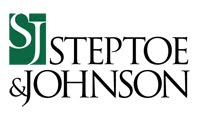Noting that it continues to see “a significant number of charges alleging pregnancy discrimination,” and that its “investigations have revealed the persistence of overt pregnancy discrimination, as well as the emergence of more subtle discriminatory practices,” the U.S. Equal Employment Opportunity Commission (“EEOC”) recently issued Enforcement Guidance on Pregnancy Discrimination and Related Issues (“Enforcement Guidance”). The full text of the Enforcement Guidance is available here.
The EEOC’s issuance of the Enforcement Guidance, which focuses primarily on the fundamental requirements of the Pregnancy Discrimination Act (“PDA”), while also touching on the pregnancy-related protections provided under the Americans with Disabilities Act (“ADA”), sends a strong signal to employers that their employment decisions and policies will now be more intently scrutinized for actionable pregnancy discrimination.1
The Enforcement Guidance focuses on the issue of equal access to benefits – in particular, to light duty, leave, and health insurance. With regard to light duty, employers may not treat employees whose capacity is limited by pregnancy, or a pregnancy-related condition, any differently than they do employees who are similarly limited, but for reasons unrelated to pregnancy.
As for leave, employers should be cognizant of the following. First, they may not force an employee to take leave because she is or has been pregnant, so long as she is able to perform her job. Second, the PDA mandates that employers permit women with pregnancy-related physical limitations to take leave on the same terms and conditions as employees who are similarly limited for other reasons. Finally, while leave related to pregnancy-related medical conditions will, necessarily, be limited to female employees, leave to bond with or care for a newborn must be extended to male and female employees on an equal basis.
With regard to health insurance, employers should note that an employer-provided health insurance benefit plan must cover pregnancy-related costs to the same extent it covers medical costs unrelated to pregnancy. This required symmetry of coverage must extend to costs stemming from an insured employee’s pre-existing pregnancy. Additionally, an employer may be in violation of the PDA if the health insurance it provides does not cover prescription contraceptives, regardless of whether the contraceptives are prescribed for birth control or for medical purposes. The Enforcement Guidance does not address whether, in the wake of the U.S. Supreme Court’s Hobby Lobby decision, certain employers may be exempt from providing insurance coverage for contraceptives.
The guidance also addresses the obligations under the ADA to provide pregnant employees with reasonable accommodations to address pregnancy-related limitations. Such accommodations may include:
-
redistributing marginal or nonessential functions – such as occasional lifting – that a pregnant worker cannot perform;
-
modifying workplace policies, such as to afford a pregnant employee more frequent breaks;
-
-
allowing a pregnant employee placed on bed rest to work remotely (where
feasible); or
-
granting leave to a pregnant employee in excess of what the employer typically provides under its sick leave policy.
The final section of the Enforcement Guidance provides “best practices” that employers can utilize to reduce their exposure to pregnancy-related liability under the PDA and ADA. The EEOC suggests, as a general matter, that employers should:
-
develop, disseminate and enforce a strong policy based on the requirements of the PDA and ADA;
-
train managers and employees regularly about their rights and responsibilities related to pregnancy, childbirth, and related medical conditions;
-
conduct employee surveys and review employment policies to identify and correct any policies or practices that may disadvantage women affected by pregnancy, childbirth, or related medical conditions, or that may perpetuate the effects of historical discrimination in the organization;
-
respond to pregnancy discrimination complaints efficiently and effectively; and
-
-
protect applicants and employees from retaliation.
In light of the EEOC’s heightened emphasis on PDA and ADA enforcement, employers should consult counsel before undertaking employment actions that may implicate pregnancy-related protections under the PDA or ADA, and to evaluate whether revisions to existing employment policies are needed to limit exposure to pregnancy- related liability.








